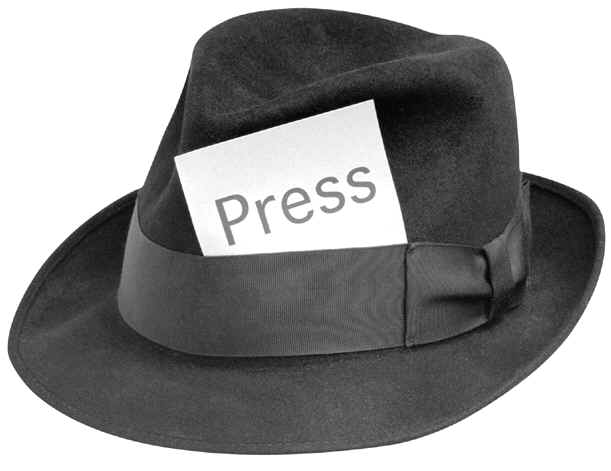Posts Tagged ‘PR’

How to respond when your child shouts, “You’re Not The Boss Of Me” is the question posed in the Wednesday, November 19, 2018 article in Great Schools. They pointed to 5 different responses parents/caregivers can use without getting into a power play. The #1 piece of advice came from longtime AJGPr client, parenting expert, Betsy Brown Braun. For the full article in GreatSchool, click here.

The widespread use of social media has fundamentally changed how people communicate and share information and that includes PR professionals.
Twitter, Facebook, YouTube and other social media sites are essential modes of communication and “getting the word out.” The speed of information sharing is faster than ever before and PR professionals have access to a wealth of content that can be shared with consumers and key media influencers seeking solutions to a problem.
Thanks to social media the dynamic between PR professional and journalists/producers has changed. What used to be a monologue is now a conversation. Journalists and producers actively seek information and sources online. Many are active on Twitter or maintain blogs. So communication is faster and getting significant stories to them is easier.
There are so many uses for social media when creating a public relations and marketing campaign. It allows for conversational marketing and is another way to reach influencers. Blogging is also another way PR professionals and their clients can share stories beyond just what goes into a press release. Creating a simple keyword based search on Twitter can connect companies with people at exactly the right time to serve as a helpful resource.
At AJGpr, we embrace multiple channels of social media and use it to complement traditional means of marketing and creating brand awareness.

You’ve researched your target list, crafted a great pitch, and sent it out to the appropriate contact. Your pitch was timely and newsworthy. Now what? How do ensure your pitch will avoid getting tossed in the trash and making it to print or the airwaves?
Getting attention has as much to do with the fine art of follow up as it does with the pitch itself.
Think about your contact, the producer, the editor, and walk in their shoes. They are constantly on deadline getting their current news story on-air or in print and perhaps also trying to make it out the door in time to see their kid’s softball game. And all the while, your pitch lands in their mailbox amongst 100 other PR specialists vying for their attention.
If your pitch is as well written as you think it is, and has a catchy subject line and lead paragraph, they might actually save it in midst of their already busy news schedule for further thought – when the time is right. But, more often a pitch can go unanswered and forgotten, if there is no follow-up – because your contact is just busy.
So what do you do? AJGpr, a Los Angeles PR firm, has some tips to share.
Let at least two days go by and call. Why? Because you want to remind your contact that your pitch was sent and get it back on their radar.
But what you do when your contact answers the phone is just as important as a well-crafted pitch? There are rules for the follow up with journalists, and if a break them, your pitch and your relationship make go by the wayside for good. So, make the call and:
Keep it Short, Simple, and Snappy – Your follow-up phone call should last three to four minutes tops. DO NOT RAMBLE. If need be, write a script and practice introducing yourself, reminding the contact (in a few short sentences) why you’re calling, and asking if they’re interested in covering the story. If they say no, thank them for their time and hang the phone up politely
Be Prepared – Your contact may very well be interested in your story, but remember they may also be on deadline when you call. Be cordial and ask when there might be a better time to talk. If in fact, they are interested in hearing the pitch again — be prepared to answer questions, provide quotes and facts, and offer to resend the initial pitch if necessary.
Do Not Sell – This is not the time to SELL the story. If they remember the initial pitch and want to hear more – the door is open. But if they are not interested even the best sales pitch will not persuade them if they’ve already determined that the story is not a fit. So again, say thank you and move on.

How To Write The Perfect Pitch
Any good publicist knows that a pitch serves one purpose – to pique the interest of a journalist or producer enough to get them to cover your story. So, knowing how to write a good pitch is crucial to getting media placement. AJGpr, your public relations specialist, recommends following these 9 simple steps to writing the perfect pitch:
STEP ONE: Preparation
Ask these questions:
– Do I have a compelling, newsworthy, or interesting story to tell?
– Do I have a clear understanding of my objectives (drive business, create awareness, improve sales, heighten image)?
If the answer is yes to all of the above, then move to Step Two.
STEP TWO: Create Your Media List
Develop a targeted media list that captures all the outlets that might be interested in your story. Be honest with yourself and ask the hard question – is there a place for my story in this magazine/television program/radio show/blog? If the answer is no –then check it off your list.
STEP THREE: Know Your Media Targets
Do your homework. Know you media outlets inside and out. What kind of stories/news items do they feature? Who is their target audience? You have to watch the television programs, read the magazines, newspapers, blogs, and listen to the radio shows you are pitching. If you understand the outlet and their target demographic you will know if your pitch is right for that outlet.
STEP FOUR: Know Your Contacts
If you have a health story, find the producer or editor who covers heath.
Spend the extra effort to discover the best contact at each outlet, the one most likely to be receptive to your pitch. Don’t waste your time blasting a pitch out to a large list, nobody will write about it. Before you begin pitching, you should know without a doubt that you have the right contact for the story you are pitching. Then frame the story/news item in a way that makes it clear to the producer/editor that it fits in with their specific outlet’s approach – otherwise it ends up in the trash.
STEP FIVE: Craft Your Subject Line
The subject line is the first thing your contact will read – so it has to catch their attention and make them want to open your email and not hit delete.
A good rule for any subject is to be as succinct and to the point as you can.
STEP SIX: Craft Your Opening Sentence
Your opening sentence is key. Here is where you can expand on your subject and hook the reader. It must be interesting and compelling so that your contact wants to read more.
STEP SEVEN: Craft The Main Body
Once you have readers’ full attention with your subject line and opening sentence, you then want to interest and educate them. You need to provide information that will resonate with the target publication and answers the five W’s (who, what, when, where, and why) and the H (how). Use a professional and friendly tone. But make it feel personal. If you have done your homework, your pitch should be something your reader will care about. And remember keep your pitch short and to the point.
STEP EIGHT Rewrite, Edit and Proofread
Writing a the perfect pitch takes time, so don’t rush. Look at your pitch with a critical eye and when you are satisfied that you have crafted an interesting pitch with a catchy subject line and NO typos…then hit send.
STEP NINE: Follow-up
Journalists get dozens of pitches a day and can’t always read your pitch the moment you send it. Give it a day or so, sometimes even a week – and if it is a good pitch, which fills their immediate needs, they will contact you. Some will file it away and others will hit delete. So use your judgment and if you feel inclined to follow-up then send a quick one-sentence email, hitting on the core message of your original pitch and asking for their response.

What is PR?
In this competitive world, media attention can make a company, organization, product, or individual stand out from the crowd. Having an edge in the market place is crucial to the success of any company, organization, product, or individual. Some companies/individuals choose to invest in costly advertisement campaigns to enhance their public image. Others use public relations to get their message “out there.”
Public Relations, unlike advertising, guarantees a company, an organization, a product, or individual, third-party endorsement by providing media exposure through television, print, Internet, or radio. Such third-party endorsements effectively augment the reputation and image of a company, an organization, product or individual.
Public relations specialists often know as “image shapers” are hired to do just that — shape and maintain the image of a company, organization, or individual in the eyes of the client’s various target audience through media placements. A PR specialist must first understand their clients mission and business goals before launching a media campaign. Once this is established, and the target audience is defined, a skilled PR specialist uses her media contacts to present the company, organization, product, or individual in the best light.
PR is a very effective way to reach and influence a target audience and costs far less than advertising.


